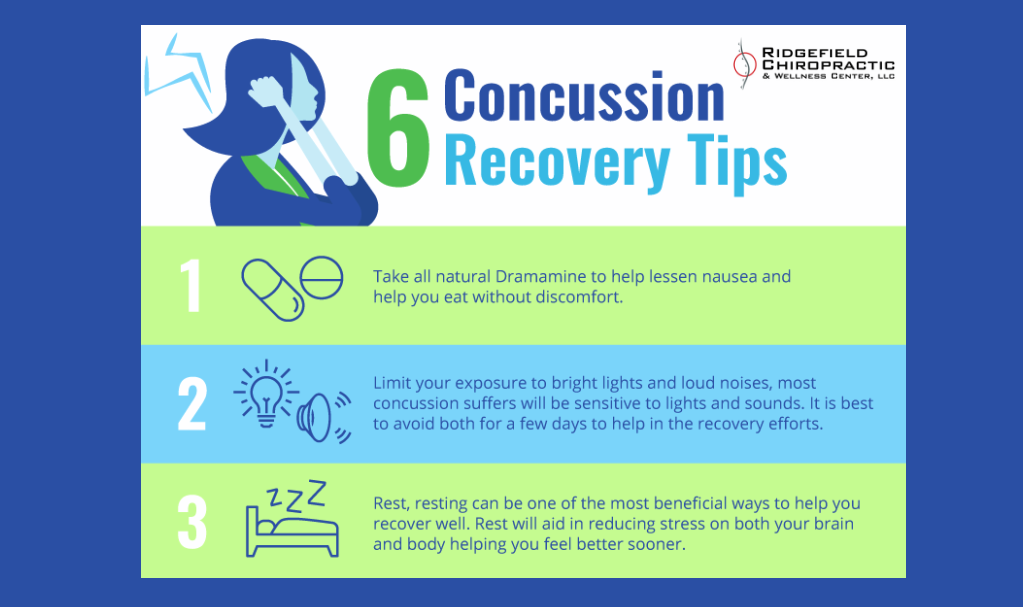6 Concussion Recovery Tips

Concussions are not enjoyable and can cause issues long after they are gone, it is very important that after a concussion a proper recovery is followed. A proper recovery can take time and seem frustrating, the only way to lessen the effects and long lasting repercussions is having a proper recovery, there are some great ways to help you feel better and recover faster. Concussions can be scary and cause lasting side effects, they do not have to keep you down long. Recovery can be difficult and the symptoms can be frustrating, however; if you follow our suggestions you will be on your way to feeling better in no time!
The Risks of Not Receiving Treatment for Whiplash

Maybe you got into a fender bender after work. Perhaps you took a nasty spill off your bike. Maybe you slipped and fell on the ice outside the house. Whatever the case may be, your neck aches and you know something is wrong. Could it be whiplash? Whiplash, or neck strain caused by any blow or impact that causes the head to move forward and backward very suddenly, can tear muscles and tendons in the neck and create ongoing pain and discomfort. Most commonly associated with car accidents, whiplash can be caused by any major impact or accident. And if you think you have it, getting treatment is essential. Here’s what you need to know about whiplash and the risks of not receiving treatment if you’re suffering from it: What is Whiplash? There’s a bit difference between whiplash and other types of neck injury. Here’s how the Mayo Clinic defines the former: “Whiplash is a neck injury due to forceful, rapid back-and-forth movement of the neck, like the cracking of a whip. Whiplash most often occurs during a rear-end auto accident, but the injury can also result from a sports accident, physical abuse or other trauma.” How do you tell if you have whiplash? The signs and symptoms of whiplash frequently include headaches, neck stiffness and pain, fatigue, dizziness, decreased range of motion in the neck, headaches at the base of the skull and tenderness throughout the shoulders, arms, or upper back. Generally, whiplash is treatable, and most plans include a combination of medication, exercise, and chiropractic care. In some rare cases, whiplash can create chronic neck pain and other ongoing complications. When you Should see a Doctor If you’ve recently suffered any kind of large impact, and now you’re experiencing neck pain or other symptoms, it’s time to see a doctor. Because whiplash typically involves a large impact to the head and neck, it can be accompanied by traumatic brain injuries, concussions, spinal fractures, and other serious conditions that require immediate treatment. As such, it’s critical to get a prompt and accurate diagnosis and to rule out more serious conditions. As a general rule, you should see a doctor any time you’ve been involved in an auto accident, been a victim of physical abuse or assault, or participated in a contact sport that involves collisions. The Treatments for Whiplash In most cases, the symptoms of whiplash will diminish with time. Here’s what you can do to help promote recovery and support your healing: 1. Start Icing Your Neck Immediately after impact, start icing your neck. If you do it as soon as possible after the injury, you can reduce pain and swelling and keep your neck from undergoing even more damage. Wrap an ice pack in a thin towel or cloth to prevent freezing of your skin, and apply the cold compress for 15 minutes every 3-4 hours for 2-3 days. This is a simple home remedy, but it can be very powerful. After about 2-3 days of icing your neck, you can start applying moist heat, such as a towel soaked in hot water, to your neck. A warm bath will also help. Bear in mind that this therapy should only be used after the initial swelling has gone down. 2. Take OTC Painkillers If your doctor recommends it, take some OTC painkillers, such as ibuprofen or naproxen. Either of these options will help reduce pain and swelling, and promote ongoing comfort as your neck heals. Be aware that these medications can have side effects. Unless your doctor recommends it, you should never use them on a daily basis or in amounts more than the label directions. Be sure to talk to your doctor before you start taking these medications with other medicines, or taking them if you have any medical problems. If OTC painkillers aren’t enough to resolve your pain, you may want to talk to your doctor about alternate methods like essential oils or prescription painkillers. 3. Wear a Neck Brace If your doctor recommends it, consider using a neck brace or collar to add support to your neck. While these things aren’t recommended for long-term use, they can be fantastic for short-term support and healing. If you do use a neck brace, be sure to talk to your doctor about finding one that fits and will best support your neck muscles. 4. Use Other Treatments Ultrasound technology, massage, acupuncture, and chiropractic care are all valid additional treatments for whiplash-related neck pain. Leave no stone unturned when it comes to your healing. Talk to your family and friends about the things that have worked for their neck pain, and consult with your doctor about complementary treatments that could help you be more comfortable. Anything you feel compelled to explore could be another avenue on the road to your healing. 5. Give Yourself Time While whiplash is commonly written off as a “Throw away” condition that doesn’t truly impede motion or life, it’s important to give yourself time to heal adequately after such an event. Talk to your doctor about how long you should wait before you resume normal activity, and be sure not to rush back into things before you’re ready. Doing so will only delay your healing and make it harder to get back to normal. How Long Whiplash Takes to Heal Whiplash requires some recovery time. How long you need to give it depends deeply on how serious the whiplash is. While most cases will resolve on their own within a few days, other neck strains can take weeks or months to heal. No matter what you do, remember that everyone heals at a different rate. Once the initial pain and discomfort associated with neck strain are gone, your doctor will likely ask you to begin a rehabilitation program. This rehab program will serve a few purposes. The first is that it will make your neck muscles stronger and more flexible, which makes them less susceptible to injury down the road. Secondarily, the
